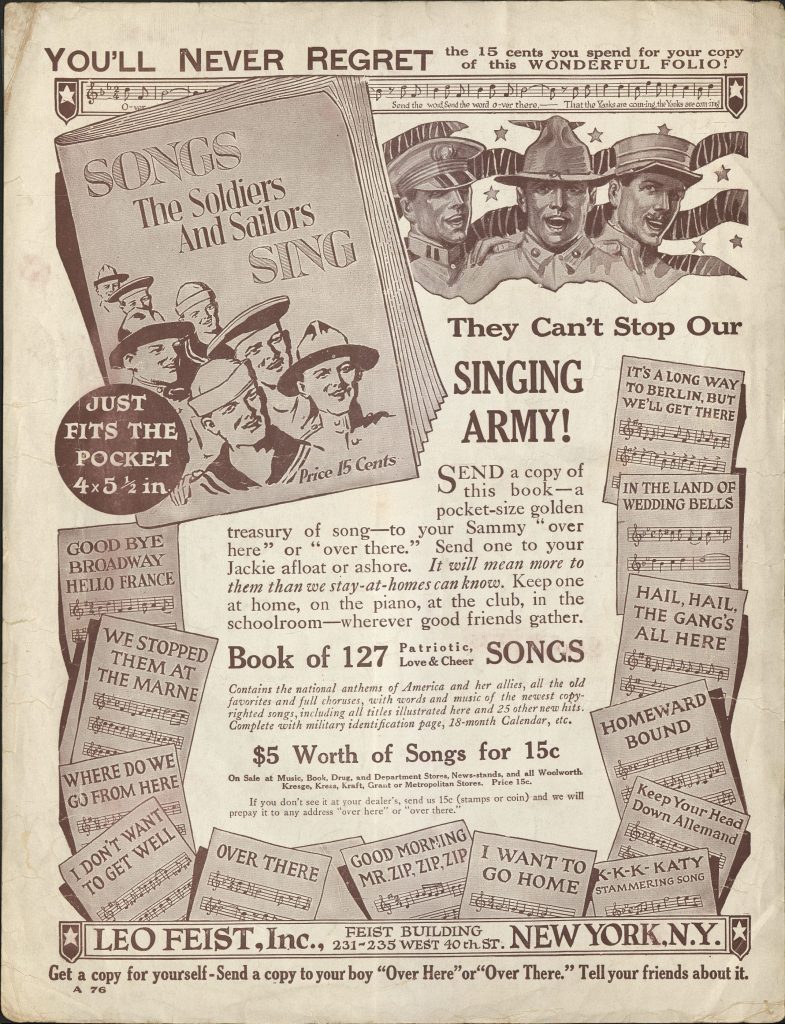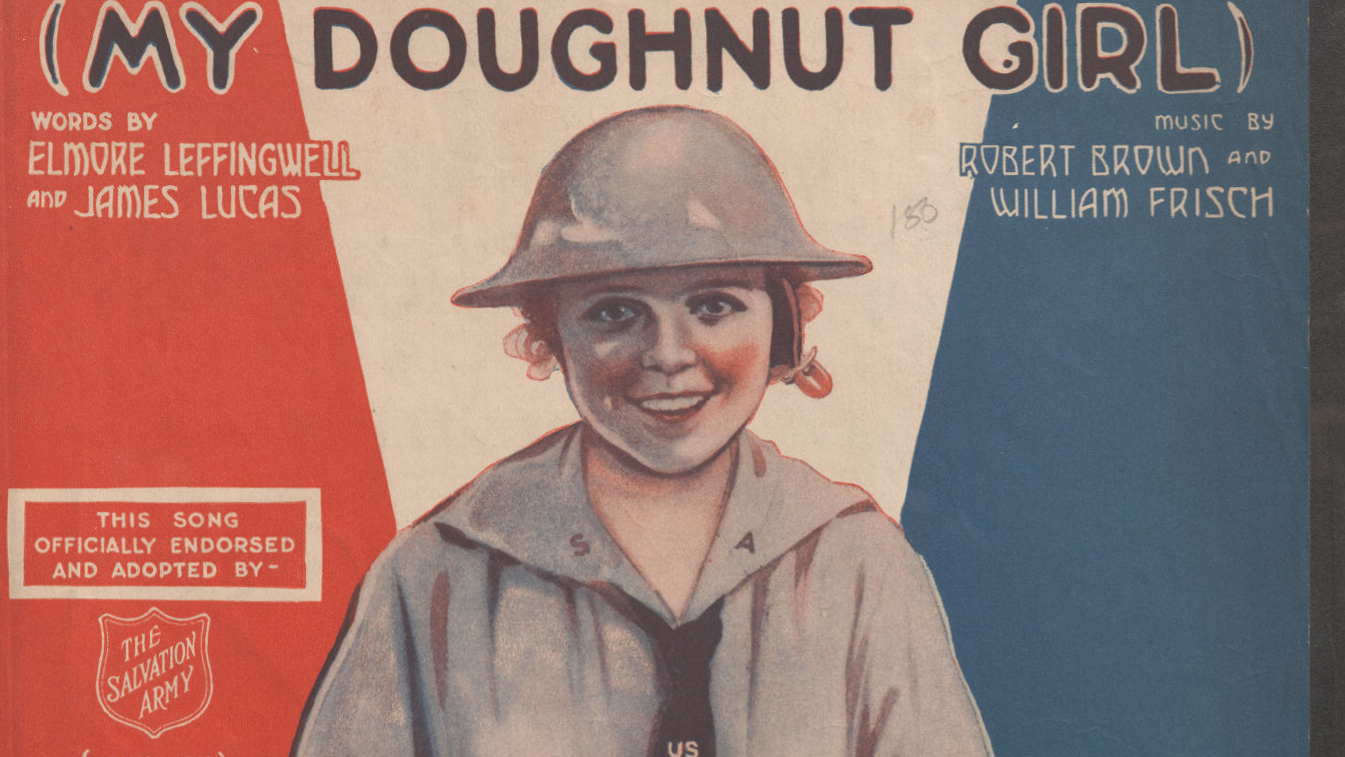Submitted by Discovery Fellow Preslie Price
I have always been enthralled by 20th century war propaganda since first cracking open a history book in middle school on World War I and II. When I began the DiscoveryFellowship, I was interested in combining that fascination with my passion and love for music of the century, especially surrounding the question of how the pair intersected before the development of mass media such as radio and TV. This notion drew me towards the subject matter of sheet music, which was a popular means of sharing songs across the country and overseas during war time.
Through the Bernard S. Parker World War I Sheet Music Collection, I found a unique bridge between the medium of propaganda and music. When I began, I expected to find only hyper-nationalistic messages and cover art with soldiers. While these elements were present in the collection, a surprising common thread that connected numerous of the pieces was the presence of women on the home front.
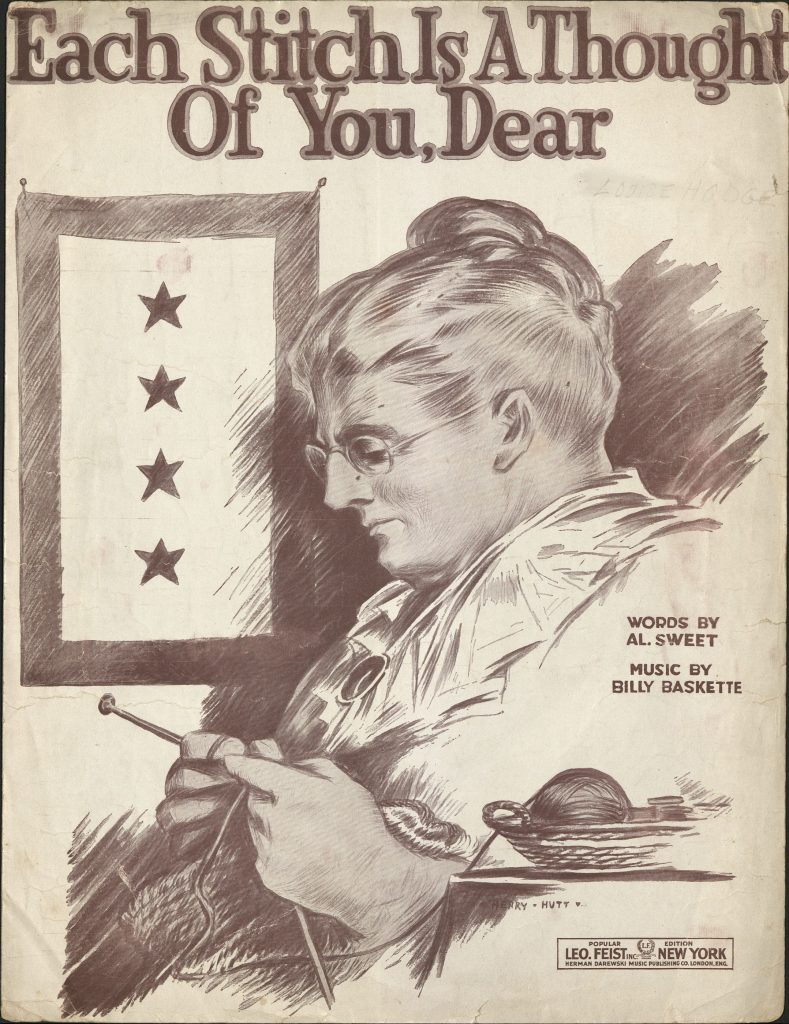
The depiction of women differed, but the most common examples were mothers, daughters, and sweethearts both at home and overseas. I had not expected this turn, but I followed it closely through multiple pieces. In Each Stitch Is A Thought of You, Dear (1918) motherhood and its value during wartime is depicted. On the cover of the piece, an older woman is shown stitching behind a Service Star Flag, indicating four members of her family are enlisted in the military.
The imagery of a mother making clothes evoked a domesticity that would have been familiar at the time of production. The contents of the song describe a mother making clothing for her sons in the war and is “Dedicated to that Army of Noble women/mothers/wives/sisters/sweethearts who are doing their bit for the boys ‘over there’.” The mother was used in this piece as a comforting figure for those at home to drive support towards the troops and also to soldiers overseas who had only ever known a small circle at home and were now plunged in the unfamiliar. This notion can also be seen in the advertisement on the back which encourages buying more sheet music containing patriotic songs for those here or abroad, spreading the message in an age before radio broadcast.
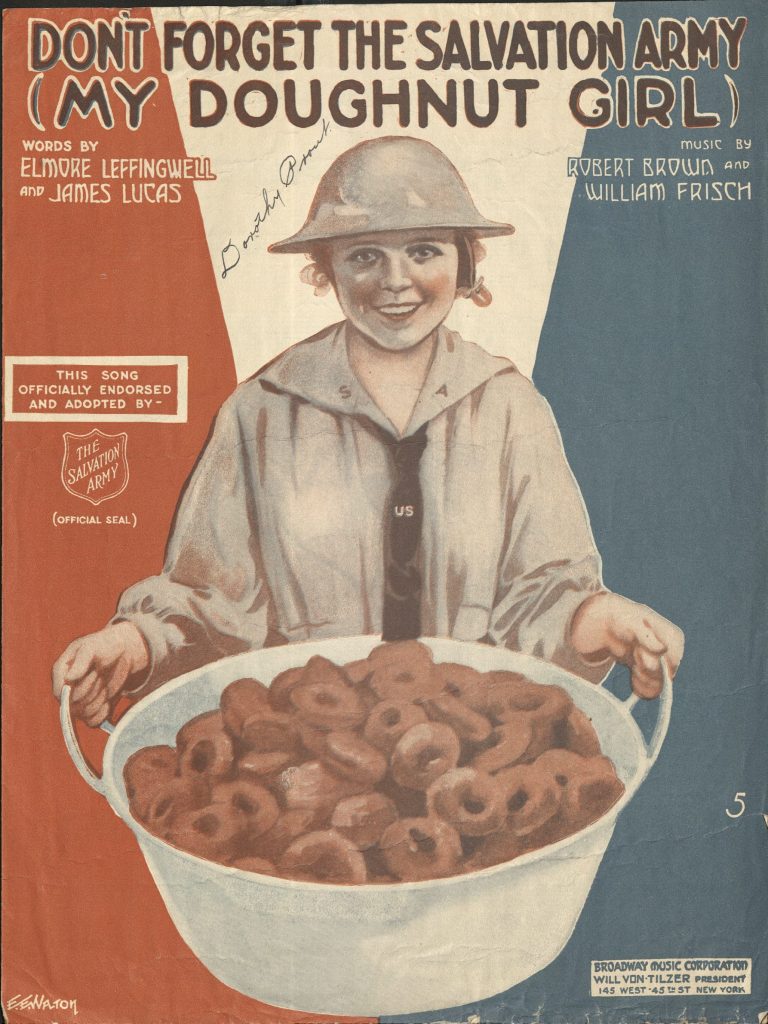
After discovering the former piece, I was interested to find more sheet music with other types of women on the home front, even after the war’s end. Don’t Forget the Salvation Army (My Doughnut Girl) (1919) immediately stood out due to its cover imagery of a woman in military attire carrying donuts surrounded by patriotic hues. The lyrics celebrate her for bringing coffee and donuts to soldiers through the Salvation Army (as a result of donations) and encourages listeners to continue supporting their efforts.
The two letters on the back were unique to this piece, both supporting the Salvation Army and the mission of the doughnut girls. The women volunteering played a tangible role in aiding troops while still fulfilling a traditionally feminine work position (providing food and comfort as a means of care). The song recounts how soldiers listening would be reminded of food/comfort at home and positive times with the doughnut girls. Those at home listening would be reminded of the pressing need to support initiatives such as the Salvation Army and the importance of female volunteers.
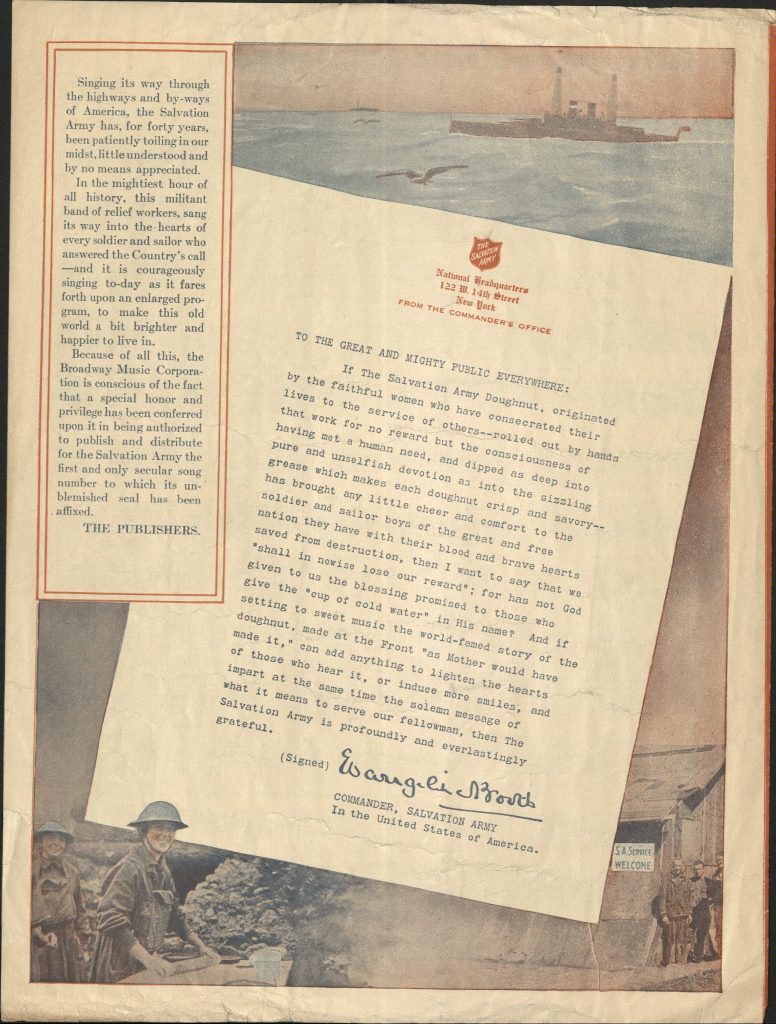
Through the mass production and sale of sheet music within the country, patriotism and American opinion on the war were more easily transmitted and support could be gathered quickly. While both pieces present women in two separate wartime roles, they each portray women as patriotic agents able to aid troops through traditional domestic work such as cooking and sewing. The two pieces connect the cause of the war to a familiar and personal subject, and make an emotional appeal that publishers hoped would be received well throughout the country.
